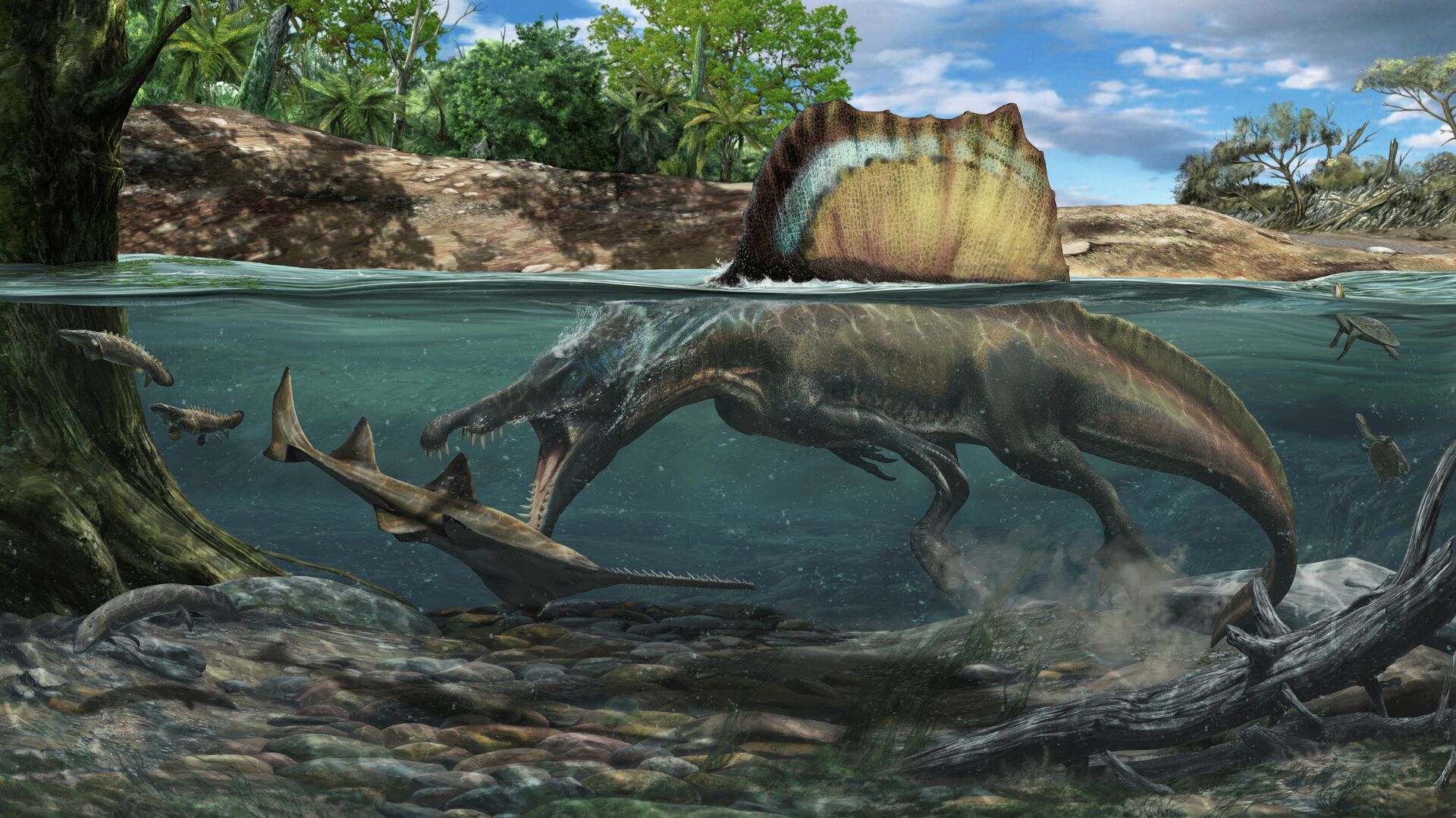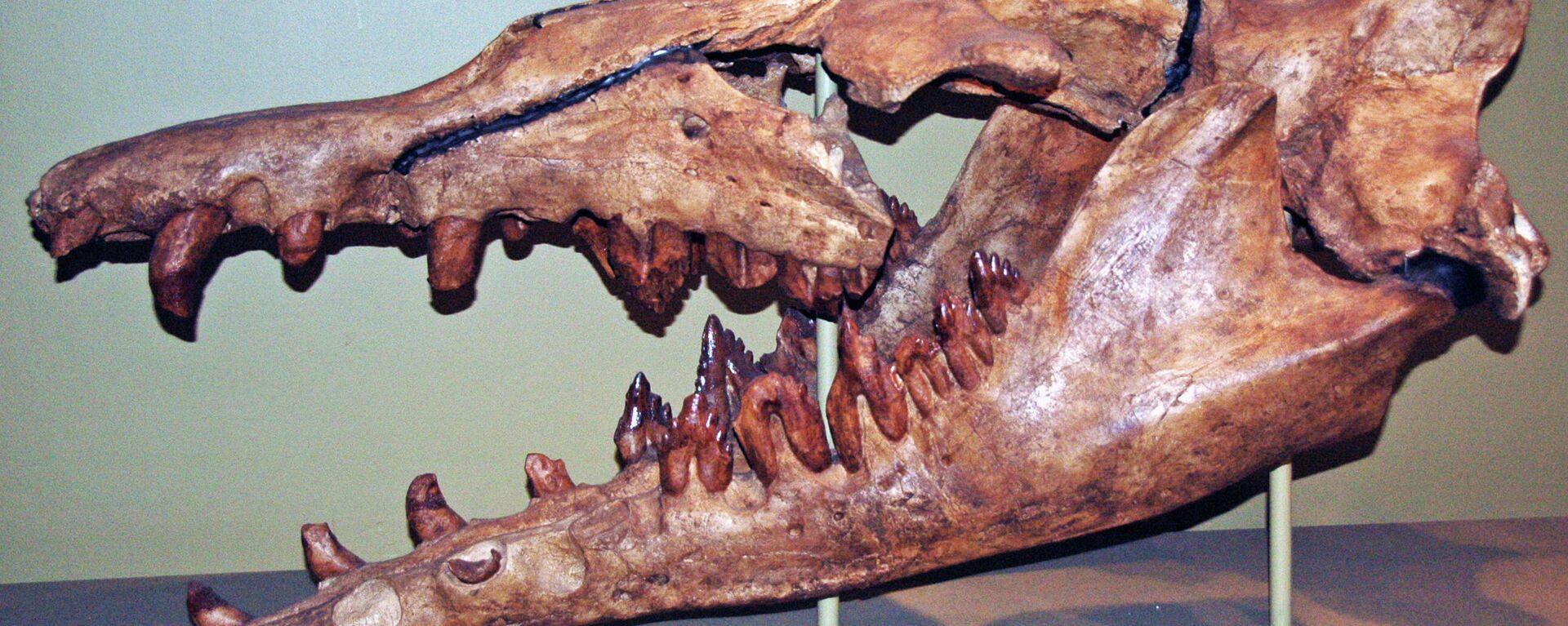‘Bones Don't Lie’: Predatory ‘Water-Loving’ Dinosaur Could Swim While Hunting Prey, Claims Study

© REUTERS / DAVIDE BONADONNA
Subscribe
The huge but believed to be incredibly agile Spinosaurus was a semiaquatic carnivore that hunted fish and smaller animals. Its name implies that it was a "spiny lizard", boasting a series of spines up to 6 feet in length along its body.
The largest predatory dinosaur known to science had bones dense enough to submerge itself in water to hunt, according to a new study.
After a group of paleontologists analyzed the density of bones belonging to the Spinosaurus, comparing them to those of penguins, hippos, and alligators, they concluded that both this ancient reptile and its close relative, Baryonyx, could pursue their prey in water.
The results of the study, carried out by Portsmouth paleontologist and National Geographic Explorer Dr Nizar Ibrahim and his team, analyzing different parts of a Spinosaurus skeleton in North Africa's Sahara Desert, have been published in Nature.

A visitor walks in front to a life-sized skeleton model of a Spinosaurus on display during a preview of the "Spinosaurus" temporary exhibition at the Museum of Natural Sciences in Barcelona on July 12, 2016
© AFP 2023 / JOSEP LAGO
Sponosaurids roamed Britain during the Cretaceous period, boasting elongated jaws and cone-shaped teeth like other fish-eating predators. While it had earlier been discovered that the reptiles in question were able to swim, it was thought they could only wade into the water.
While previously half-digested fish scales had been discovered hidden in the ribcage of a Baryonyx dug up in Surrey, experts had still remained unconvinced they could swim well enough.
Matteo Fabbri, a lead author of the paper, said researchers sought an alternative means of identifying how the Spinosaurus and other long-extinct dinosaurs lived.
"The idea for our study was, okay, clearly we can interpret the fossil data in different ways. But what about the general physical laws? There are certain laws that are applicable to any organism on this planet. One of these laws regards density and the capability of submerging into water," he said.
The study determined that animals that submerge themselves underwater while hunting for food have bones that are almost completely solid. However, dinosaurs that roamed on land have hollow centers.
"The bones don't lie and now we know that even the internal architecture of the bones is entirely consistent with our interpretation of this animal as a giant predator hunting fish in vast rivers, using its paddle-like tail for propulsion," said explorer Nizar Ibrahim in a statement.
He added that after the team had made a lengthy and extremely difficult effort to excavate one of the most enigmatic dinosaurs in the world, evidence was pointing in the same direction, “the skeleton really has 'water-loving dinosaur' written all over it!"
Nizar Ibrahim revealed that his team was already working on reconstructing in greater detail how the fascinating “river monsters” moved and hunted.

